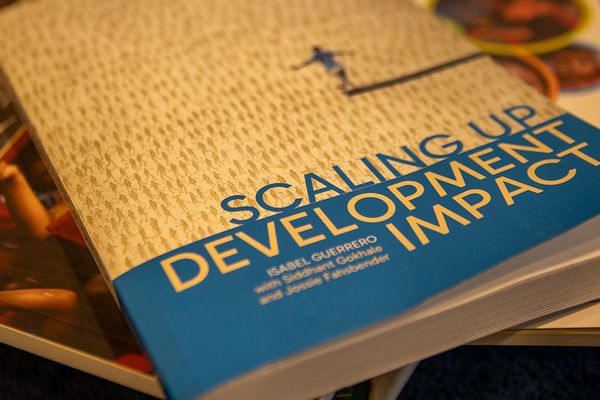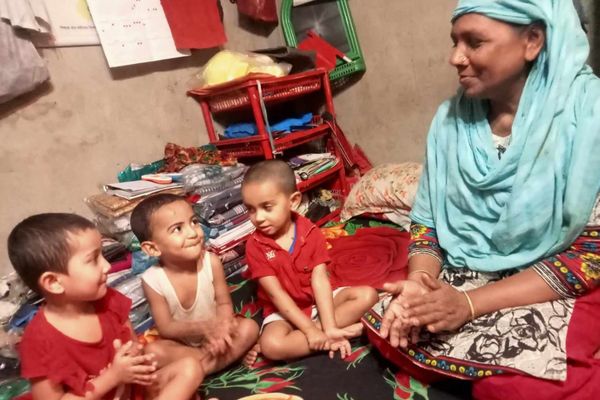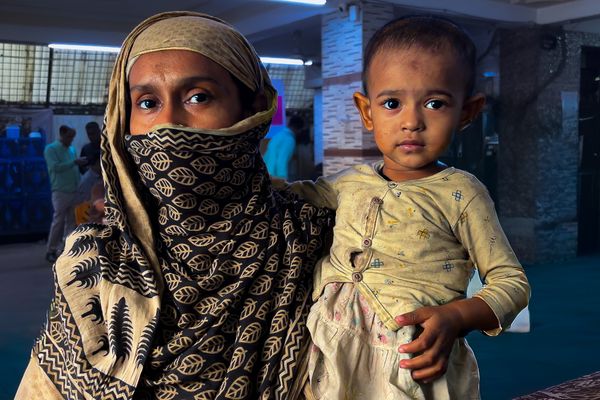The Good Feed: Firstly, what prompted you to write a book on scaling up?
Siddhant and Jossie: It started with Isabel Guerrero, the primary author of the book, who worked extensively at The World Bank and engaged with grassroots issues through the Self Employed Women’s Association (SEWA). Throughout her career she observed that top-down organisations often struggled to reach the communities in most need, particularly in frontline service delivery. On the other hand, NGOs working closely with affected communities had innovative solutions but found it challenging to scale them up. This book attempts to help bridge that gap, by sharing understanding from around the world on how to scale up effectively.
Scaling is crucial to achieving the UN’s Sustainable Development Goals. This book draws from a decade of experience in supporting grassroots organisations to scale impact at Imago Global Grassroots, and a course at the Harvard Kennedy School that Isabel has been teaching to share knowledge on scaling for achieving the SDGs. It’s designed to cater to a broad audience, including her students, serving as a textbook, while also aiming to shift perspectives on development. We’re hoping to reach a broad audience – multilaterals, the private sector, government, and social enterprises – to generate discussions that will contribute to solving development challenges.
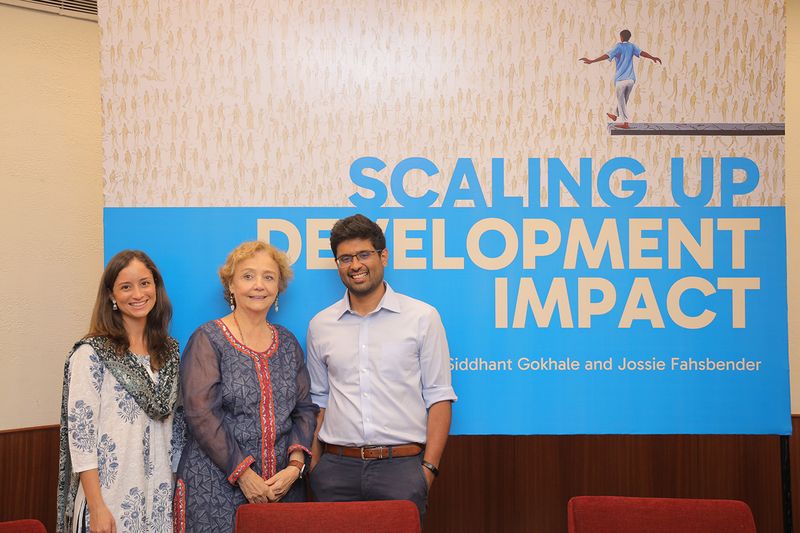
Caption: (left to right) Jossie Fahsbender, Isabel Guerrero and Siddhant Gokhale at the launch of the book ‘Scaling Up Development Impact’ in Delhi, India, October 2023 © Siddhant Gokhale 2023
The Good Feed: What insights do you have for collaborating with governments to achieve large-scale impacts?
Siddhant and Jossie: Scaling through government offers unmatched reach and distribution. All governments are not the same, though, and scaling through government can also present challenges such as principal-agent problems – when interests, political cycles, and bureaucratic inefficiencies collide.
Through the book, we explore how an organisation can navigate these intricacies. Scaling up through government, can take place organically, within government, or with external help. Inside the government, if a project, scheme or program performs well in one region then it can be scaled up by officials to a broader set of departments or regions. Outside the government, organisations can experiment, and then take the results of those experiments to different governments to scale.
A useful tool to think of scaling through government is the strategic triangle – initiatives need to be technically correct, administratively feasible and politically supportable. Learning and iteration are essential in all three parts of the triangle.
A development organisation should aim to meet three points of the strategic triangle, with people on the ground ensuring the project works, people in the office ensuring the paperwork makes sense, and people working in advocacy ensuring solutions are adaptable and able to be replicated by others. There are questions which can guide you to understand the elements of the strategic triangle that are valid for your initiative, for example – what is the minimal viable proposition or bare minimum criteria that is required to meet all the three points? How often are these three points met by other organisations in your space?
It’s also important to mention that, while the government is the ‘royal road’ to scale, this is not the only pathway to scale. Organisations can also scale through the market, through replication and expansion, and also through collaborating with other non-government organisations. BRAC does all of these – working with the government, but also scaling through the market and through building the capacity of other organisations.
Ultimately, scaling up is about navigating systems, because change needs to happen on multiple levels to transform landscapes.
Pratham, for example, works on different levels. On the mindset level, they work in villages, teaching the value of education to mothers in their mothers’ groups. They also use and promote national surveys like Annual Status of Education Report, which helps shape the mindsets of bureaucrats about what is happening in terms of education on a national level. A lot of debate before Pratham began its work was that school attendance was not up to the mark. Pratham changed that narrative to the problem being learning and absorption of study materials by students, what is being taught and at what level that is taught.
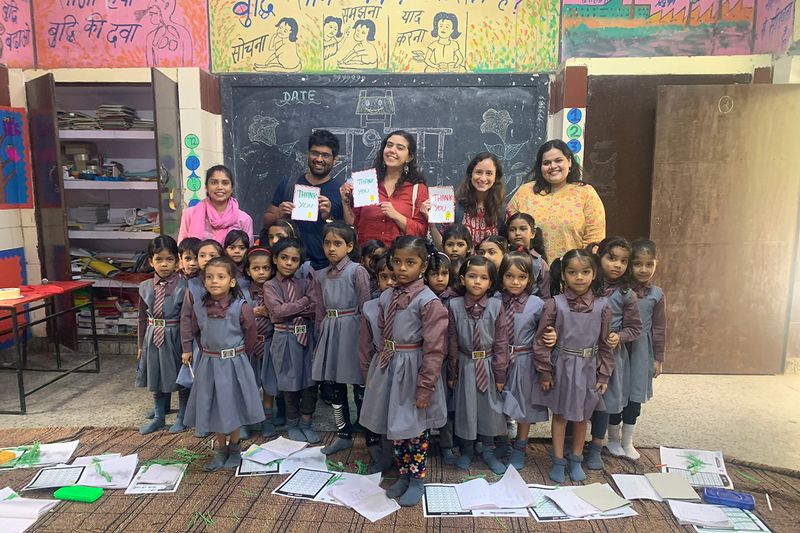
Caption: (left to right) Siddhant Gokhale and Jossie Fahsbender with teachers and students from Pratham’s Teaching at the Right Level program in Delhi, India, November 2023 © Siddhant Gokhale 2023
The Good Feed: Why did you choose to feature BRAC?
Siddhant and Jossie: Isabel frequently visited BRAC, and was struck by the scale, particularly the scale of its social enterprises. BRAC is truly a unicorn in the world of scaling up. What sets it apart is its ability to learn, pivot, and experiment – across different parts of the value chain, different sectors, even different countries – to find solutions. It can act at speed, but also has this comprehensive and patient approach to looking holistically at what people need and what is available to them in the landscape around them, which can be seen in several initiatives, for instance, how they approached growing Bangladesh’s poultry sector, over decades.
BRAC is the largest organisation we’ve worked with, but we’ve seen that it acts local wherever it goes. Local communities trust it, thanks to that bottom-up approach, openness to iteration, and commitment to developing solutions that work. It’s also made huge contributions not just through its own operations, but by creating tools and programmes and using those to build the capacity of staff in non-government organisations, and government officials. This approach is evident in BRAC’s work in education, health, poverty graduation, in its work with independent producers through Aarong, for example. There are so many challenges in different parts of the value chain, but each of them can be overcome because the staff are from those same communities they are working in, or are working really closely with the people living in them, and are able to solve each issue together.
The Good Feed: Is scaling up going to get difficult in the next five to ten years?
Siddhant and Jossie: The funding landscape is fast evolving. Funders are important enablers of scale. Traditional funding, however, can be too focused on rigid, problem-specific solutions, which can overlook the need for continuous adaptation. Scaling is not linear and demands ongoing learning and flexibility.
Funders must also be patient; results often take decades. The stories we highlight have, on average, taken decades to scale. The funding landscape is slowly shifting towards a more trust-based and local approach, but most funds still come from international donors in the global north and redirected to organisations in the global south. There is a bit of a shift towards patient capital that supports long-term development rather than fixed, short-term programs, but a lot of mindset change is needed.
The Good Feed: Thank you for making the time Siddhant and Jossie, and congratulations again on the book!
Siddhant and Jossie: Thank you for the interview.
